Eaton Canyon Natural Area
and Nature Center
1750 N. Altadena Dr
Pasadena, CA 91001
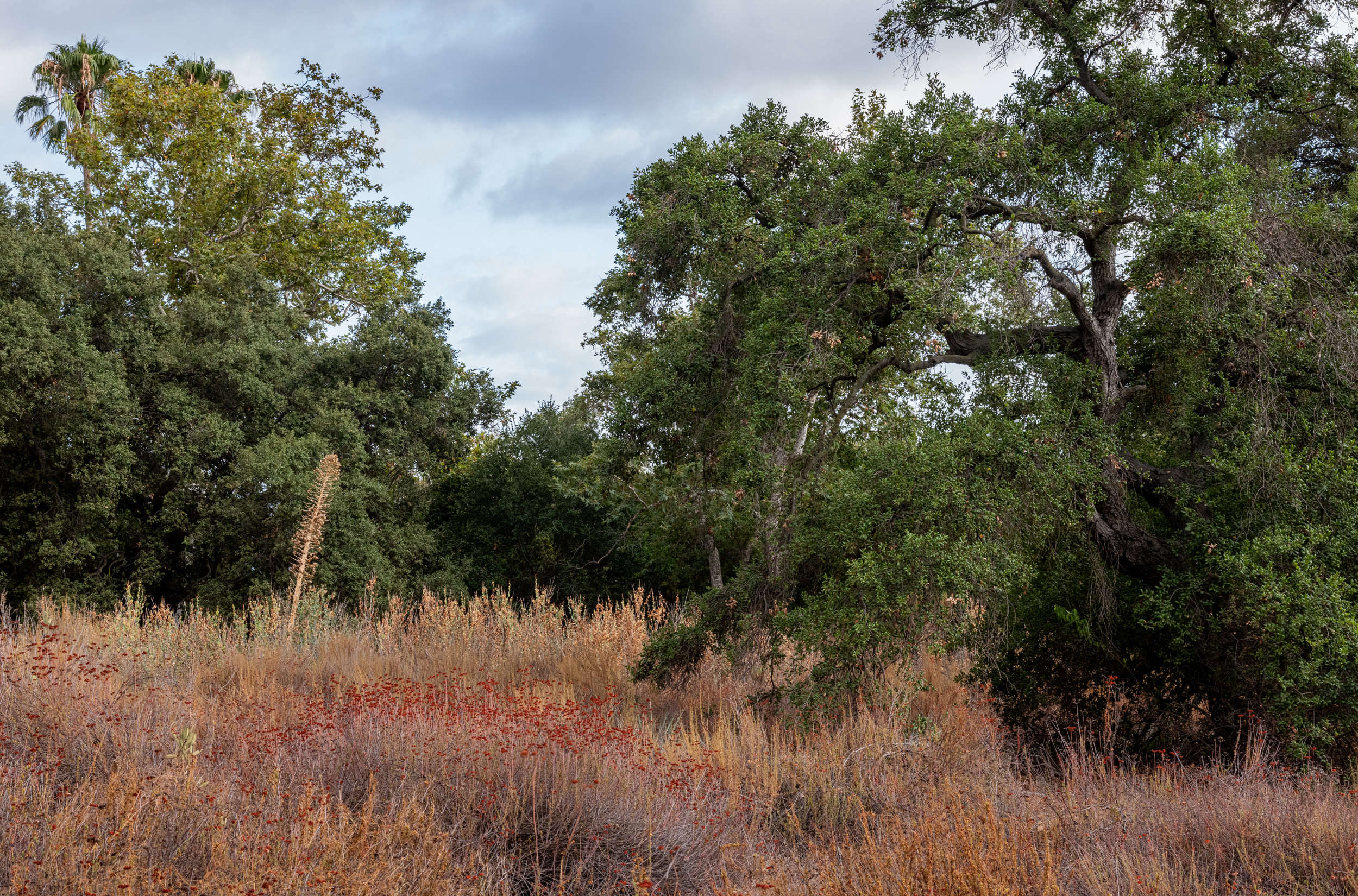
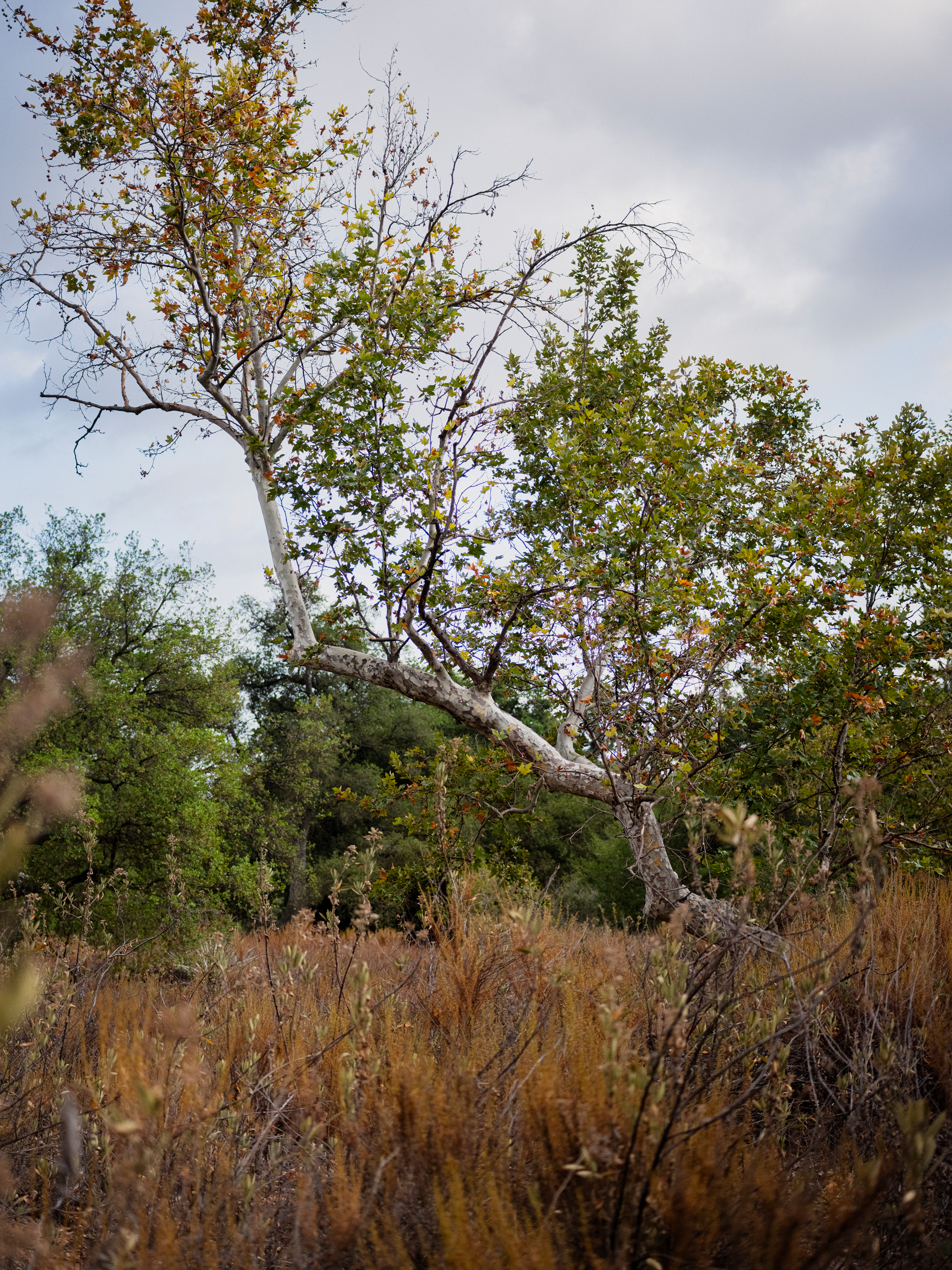
Established:
1998
Size:
198 acres
Features:
Nature Center
Hiking trails
Public Programing
Equestrian Facilities
Picnic Areas
Self Guided Nature Trails
Best time to visit:
Eaton Canyon always has something blooming. In spring look for the buckeye, the coast sunflowers and the wildflowers. In summer the buckwheats. Fall brings in the deep rust of the buckwheats and the beautiful fall color of the cotton woods. The mature oak trees that surround the Nature Center make this a pleasant place to visit, even in the height of summer.
The Eaton Canyon Nature Center and Natural Area sit at the base of the San Gabriel Mountains. It is one of the spaces in the LA Area that remind us how dramatic our urban to wild interface can be. Eaton Canyon is less than a ten minute drive from Downtown Pasadena and yet it feels like a completely different world. The San Gabriels rise dramatically, in the wet season the wash runs with water and the bushes and trees are filled with wildlife.
The Natural Area covers 198 acres and includes the Nature Center, the original site of the Mount Wilson Toll road and a series of water falls. Only the lower water fall, the Eaton Canyon Falls which can be accessed by a lovely trail that runs along the Eaton Wash, is open to the public. The upper falls, the cause of serval deaths, are considered too dangerous and are closed to the public. The Nature Center has three self guided Nature Trails, the Fire Ecology Trail, the Junior Ecology Trail and the Oak Terrace Trail.
The space around the Nature Center features several smaller walking trails, an amphitheater and a stunning example of oak woodland and riparian habitats. The area directly surrounding the Nature Center features plants many native plants commonly used in landscaping, but here
The Natural Area covers 198 acres and includes the Nature Center, the original site of the Mount Wilson Toll road and a series of water falls. Only the lower water fall, the Eaton Canyon Falls which can be accessed by a lovely trail that runs along the Eaton Wash, is open to the public. The upper falls, the cause of serval deaths, are considered too dangerous and are closed to the public. The Nature Center has three self guided Nature Trails, the Fire Ecology Trail, the Junior Ecology Trail and the Oak Terrace Trail.
The space around the Nature Center features several smaller walking trails, an amphitheater and a stunning example of oak woodland and riparian habitats. The area directly surrounding the Nature Center features plants many native plants commonly used in landscaping, but here
we see them in their wild state. The beauty is not just of the plants themselves, but here the plant community as a whole truly shines. There is the beauty of the space changes with the seasons, as some plants move into dormancy others come through with beautiful summer flowers. It reminds us not only that Southern California has seasons, but that they all have something to offer.
On the Eaton Canyon Associates website is a list of plants that can be found, with images, descriptions and a link to the plant’s Calscape page. They include not only the common landscaping plants but also the less popular plants that generally don’t make it into guide books,
” The beauty not just of the plants themselves, but the plant community as a whole truly shines.”
such as Horseweed (Conyza canadensis) or Telegraph Weed (Heterotheca grandiflora) as well as the invasive plants that are to be found at the site. It is a super handy and helpful way to learn about and identify plants in the field and to better understand our ecosystem.
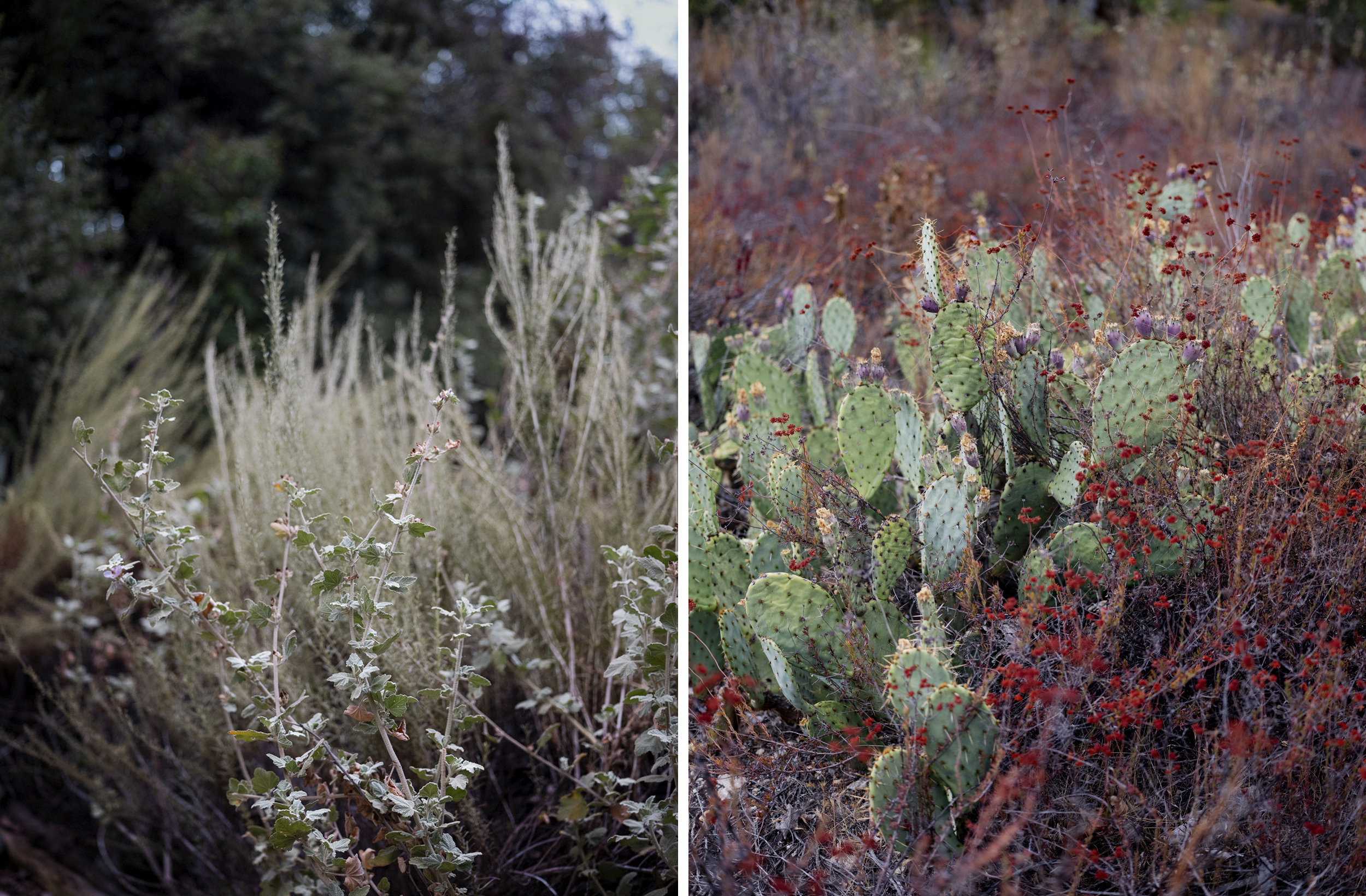
Once an important resource for the Tongva, Eaton Canyon was a part of Western expansion. Gold was discovered in late 1800’s, John Muir visited the canyon in August of 1878 and 1940’s it was used to manufacture missiles for WWII. Eaton Canyon is part of the Los Angeles River watershed. Eaton Canyon is part of the Los Angeles River watershed. Eaton Creek connects to the Eaton Wash and then to the Rio Honda, and then to the LA River.
A detailed historical timeline of Eaton Canyon, by filmmaker and artist Kate Lain, can be found on here. Eaton Canyon was an important water source for the Gabrieleño-Tongva, the village of Puntitavjatngna, was possibly the site of the small village of Topisibit. When the San Gabriel Mission was founded in 1771, the Tonga were removed from their land and sent to the mission. It was there that they were given the name Gabrieleño.
The Spanish named the canyon El Percipicio, for its steep gorges. Despite being inhabited and managed from some time by the Gabrieleño-Tongva, the Canyon was renamed later for Judge Benjamin Eaton and it is Eaton who is credited with first harnessing the water source which he used grow grapes. Eaton purchased the Fair Oaks ranch from Eliza Johnston in 1865, who was the widow of Confederate Army General
A detailed historical timeline of Eaton Canyon, by filmmaker and artist Kate Lain, can be found on here. Eaton Canyon was an important water source for the Gabrieleño-Tongva, the village of Puntitavjatngna, was possibly the site of the small village of Topisibit. When the San Gabriel Mission was founded in 1771, the Tonga were removed from their land and sent to the mission. It was there that they were given the name Gabrieleño.
The Spanish named the canyon El Percipicio, for its steep gorges. Despite being inhabited and managed from some time by the Gabrieleño-Tongva, the Canyon was renamed later for Judge Benjamin Eaton and it is Eaton who is credited with first harnessing the water source which he used grow grapes. Eaton purchased the Fair Oaks ranch from Eliza Johnston in 1865, who was the widow of Confederate Army General
Albert Sidney Johnston. Judge Eaton was also involved in the creation of the Mount Wilison Toll road, which starts in the park. It is now closed to cars but it is possible to hike the trail. In the 1930’s the land in the area that was owned by the city of Pasadena was declared a bird and game sanctuary. In 1950 Mary Beatrice Fox sold her 108 acres of the canyon to LA County for the use of a park. 13 years later the first Nature Center was built.
“Despite being inhabited and managed from some time by the Gabrieleño-Tongva, the Canyon was renamed later for Judge Benjamin Eaton”
The Canyon has been subject to many floods and fires through out its existence. In October of 1993 a wildfire burned through 6,000 acres and destroyed 2/3 of the canyon, including the Nature Center. The fire exposed a secret in the hills, The Eaton Canyon Project, and its WWII missiles. The project covered 146 acres in the foothills, and was the rocket making capital of the United States.
The Nature Center was rebuilt in 1998. Included in the grant was an allotment for the Fire Ecology Trail and the Junior Ecology Trail.
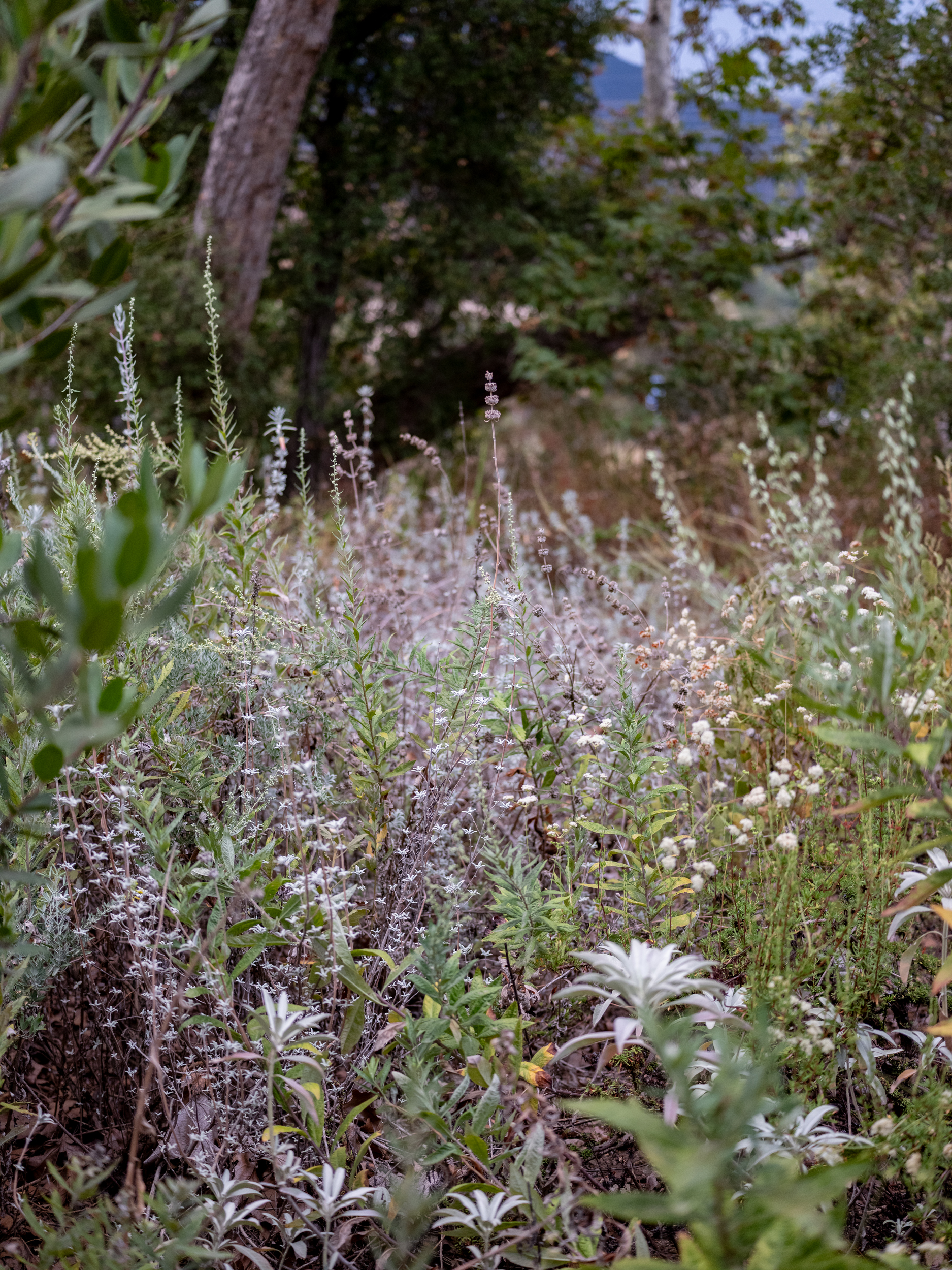
More Information
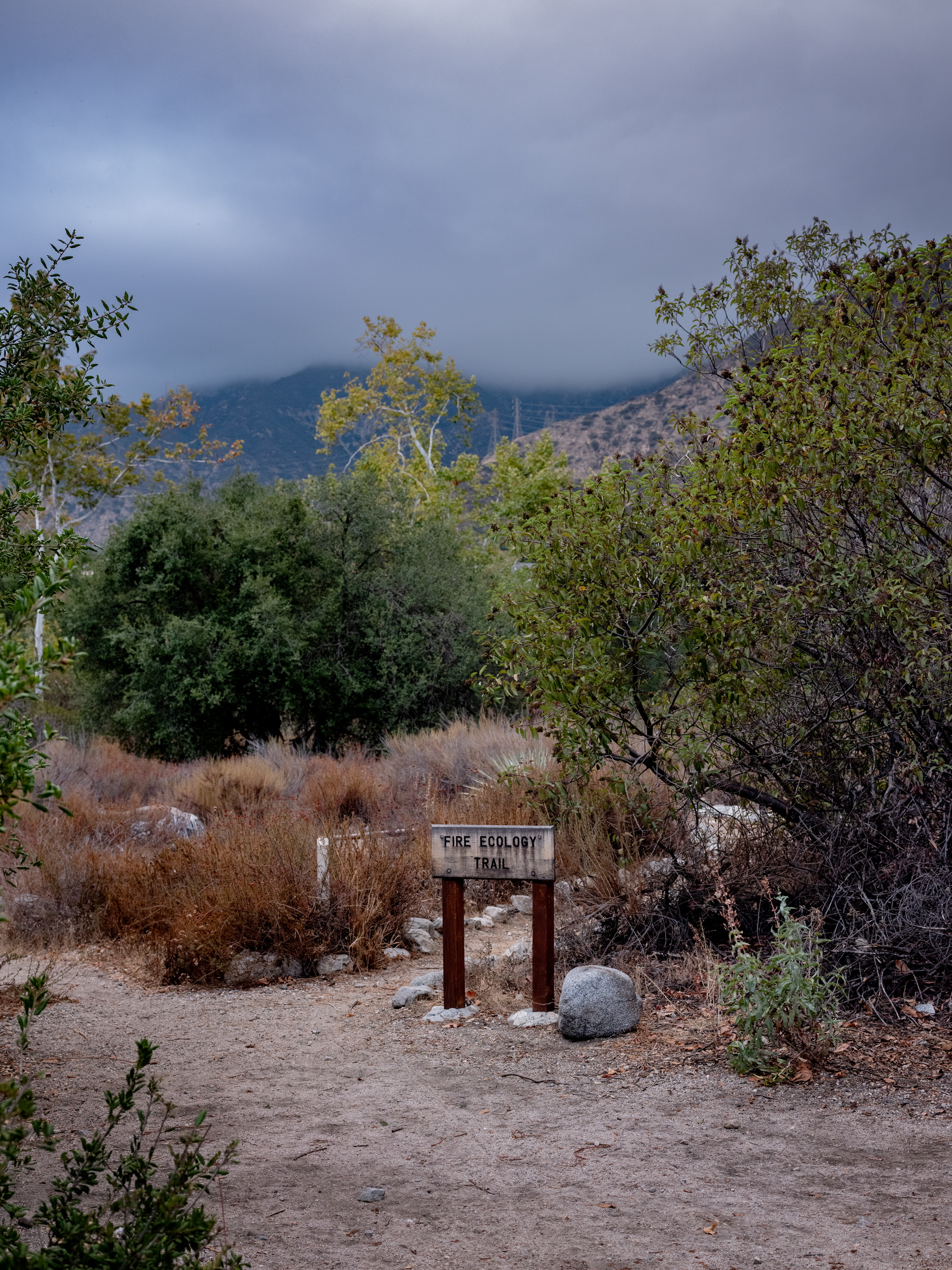
Fire Ecology Trail
The west has a complicated relationship with wild fire. We live under constant and increasing threat of fire. In fact the area that the Fire Ecology Trail covers was part of the 6,000 acres that burned in a brush fire in 1993. Climate change creates hotter summers and dryer winters, wildfire in the west gets more and more dangerous. It is hard to remember, therefore, that wildfire is a natural part of our ecology. Many of our plants have evolved to to either survive the fire or to use the fire as a means of propagation. The Fire Ecology Trail focuses on these adaptations and relationship to fire.
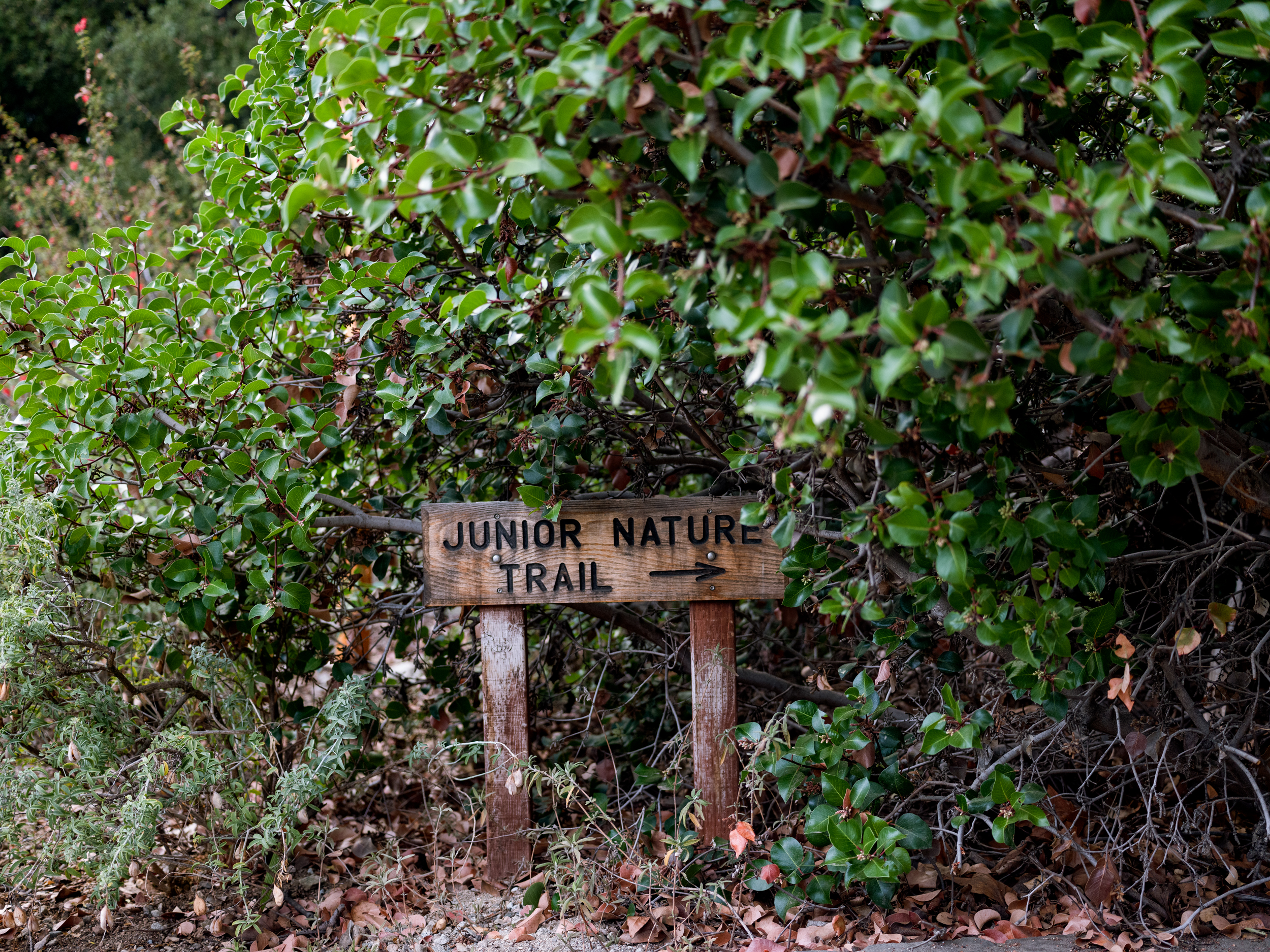
Junior Nature
Trail
The Junior Nature Trail was developed in memory of Eaton Canyon volunteer Mary Shannon. It runs in a loop, both starting and ending at the Nature Center. The Trail is designed to invite children to look closer at the environment and to stop, look and listen for birds and other animals. The guide features helpful questions encourage closer examination of plants and features of the Natural Area. The Nature Center was rebuilt in 1998.
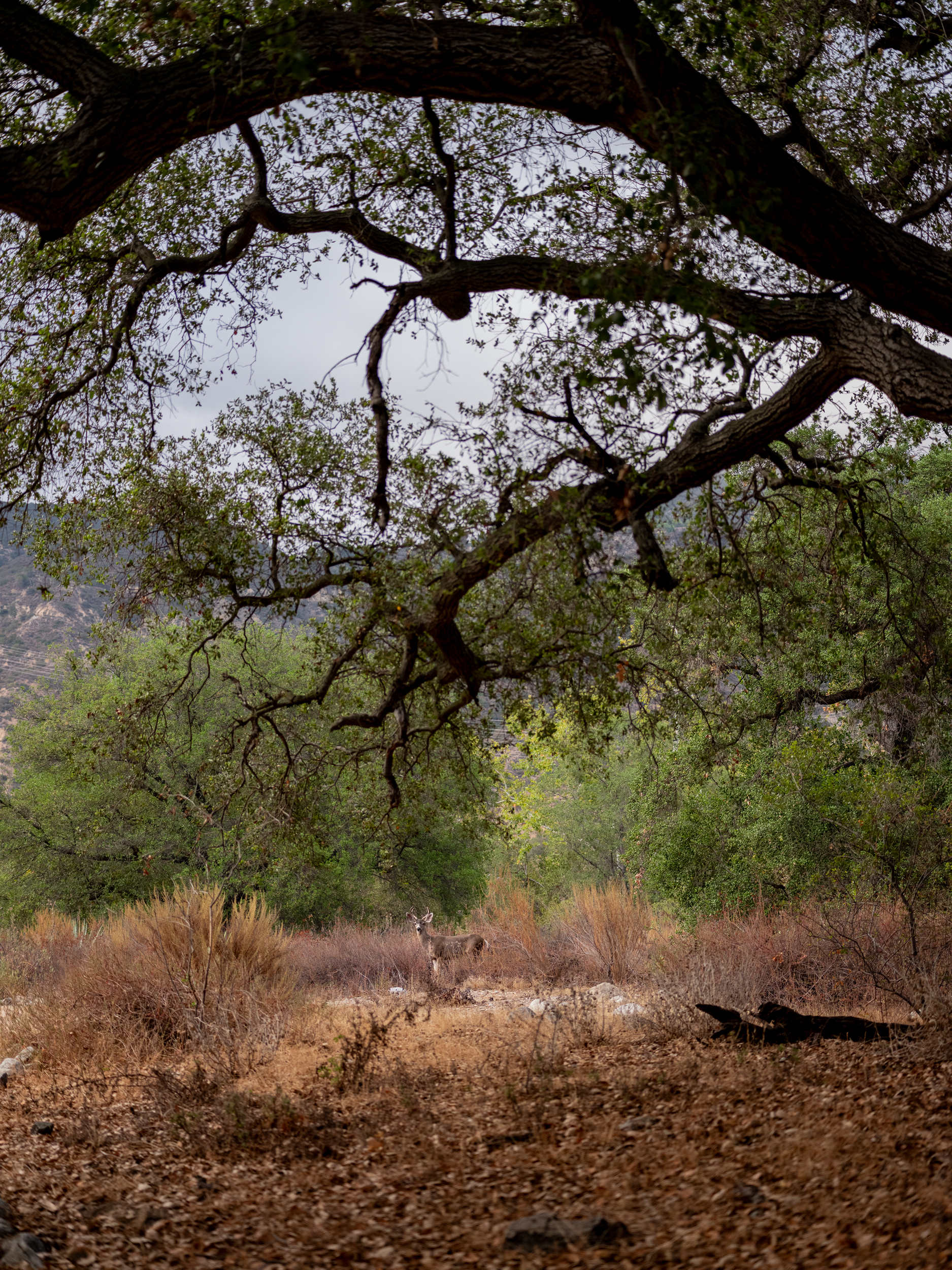
Oak Terrace
Nature Trail
The Oak Terrace Trail runs for about a quarter of a mile along the North of the Nature Center. It’s information stops focus on the common plants that make up the ecology of the Natural Area. The Trail runs through both woodland and open space, which provides a great deal of diversity in the plants that are featured. The guide gives not only information on the plants, but also how they support the wildlife and their roles in indigenous culture. It is a great starting point for those looking to learn about how our ecosystem works, and how the plants and animals are intertwined.
Address:
1750 N Altadena Dr
Pasadena, CA 91107
Phone & Email:
626-398-5420
ecncag@gmail.com
Gate Hours:
Tuesday-Sunday
8:00am-7:30pm
Closed Mondays
Nature Center Hours:
Tuesday-Sunday
10:30am-7:00pm
Saturdays
9:00am-7:00pm
Closed Mondays
Gift Shop Hours:
Tues., Wed., Fri., Sun.
10:30am-2:30pm
Sat.
10:00am-2:00pm
Closed Mondays
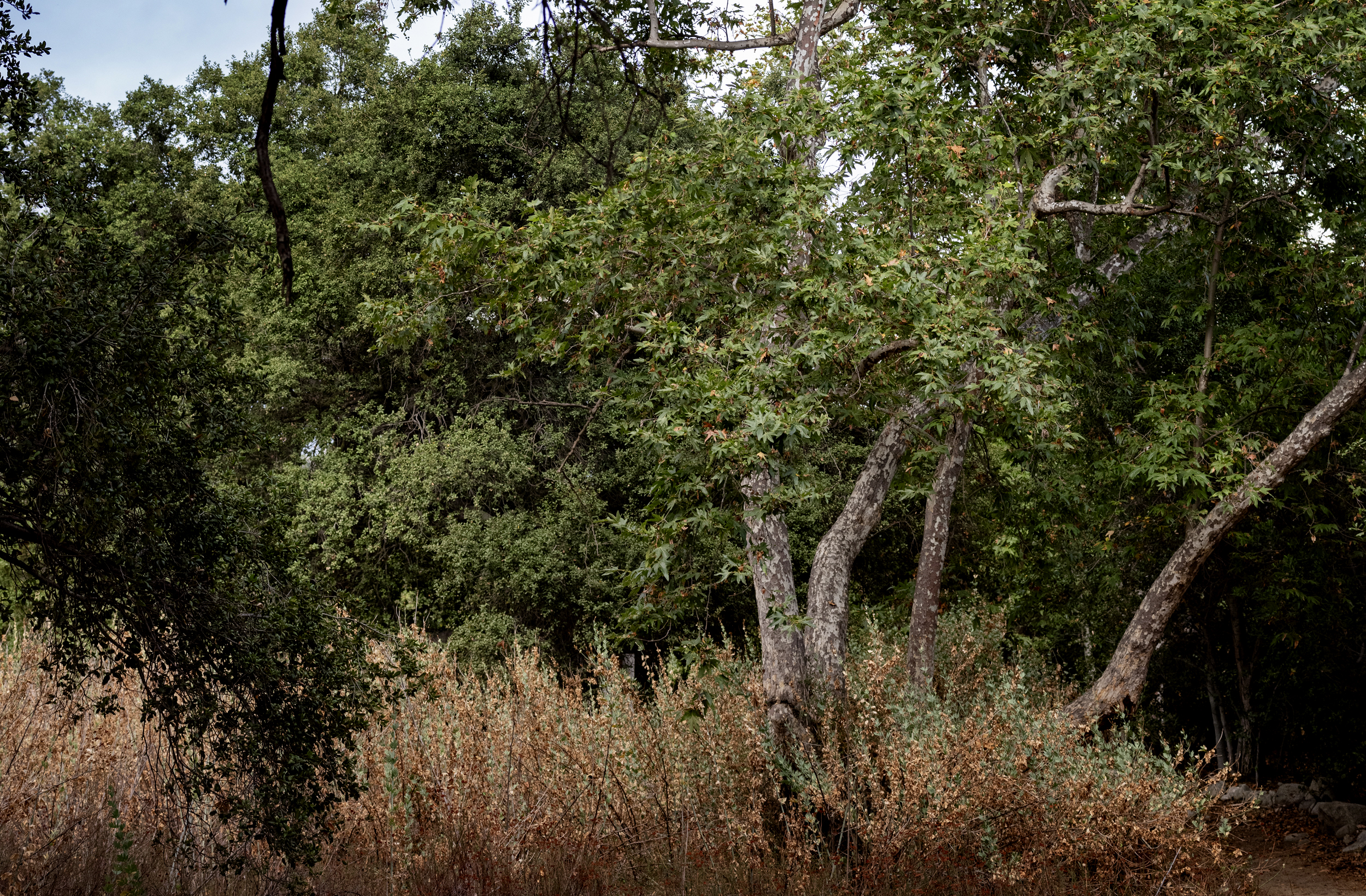


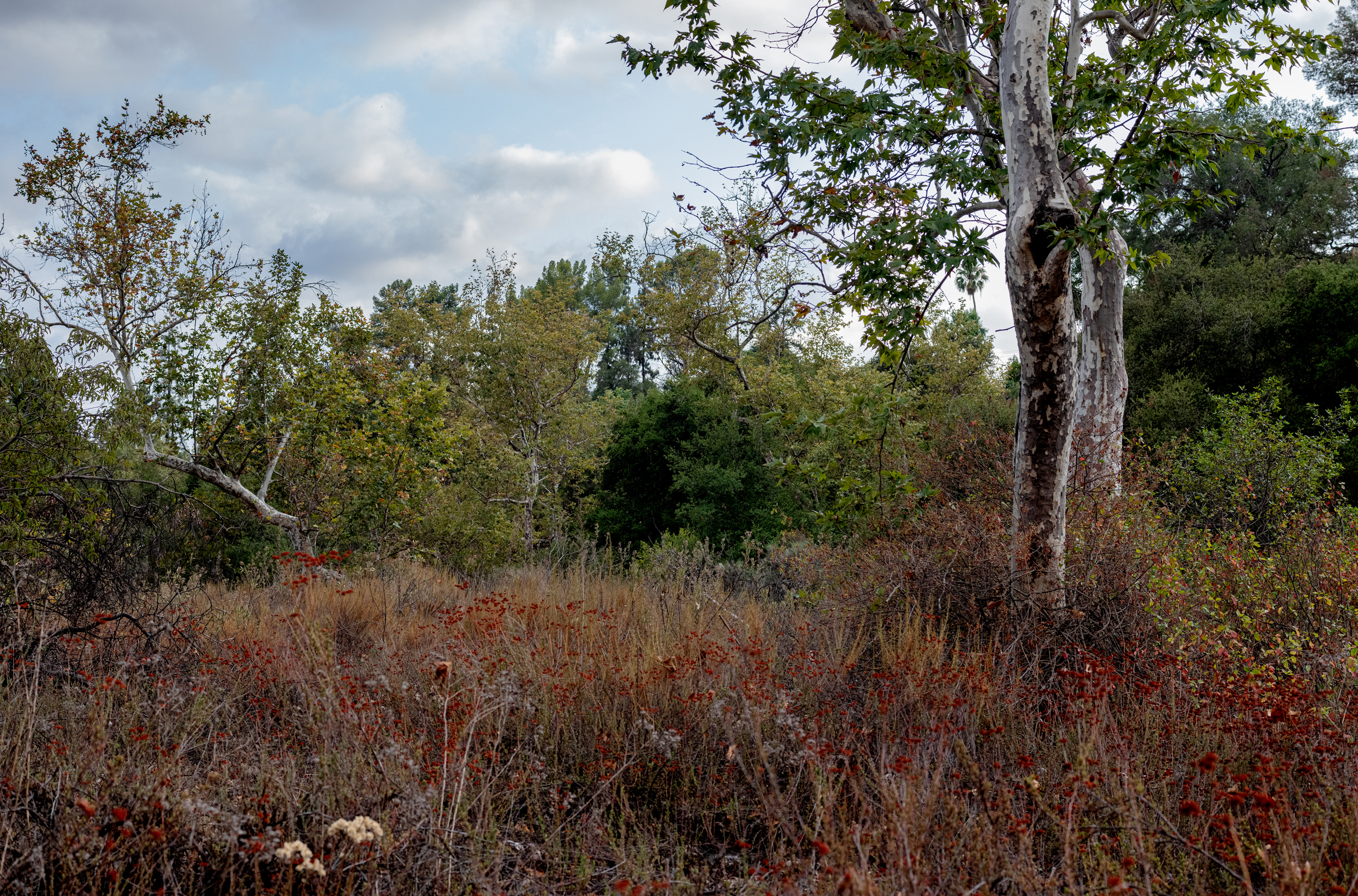

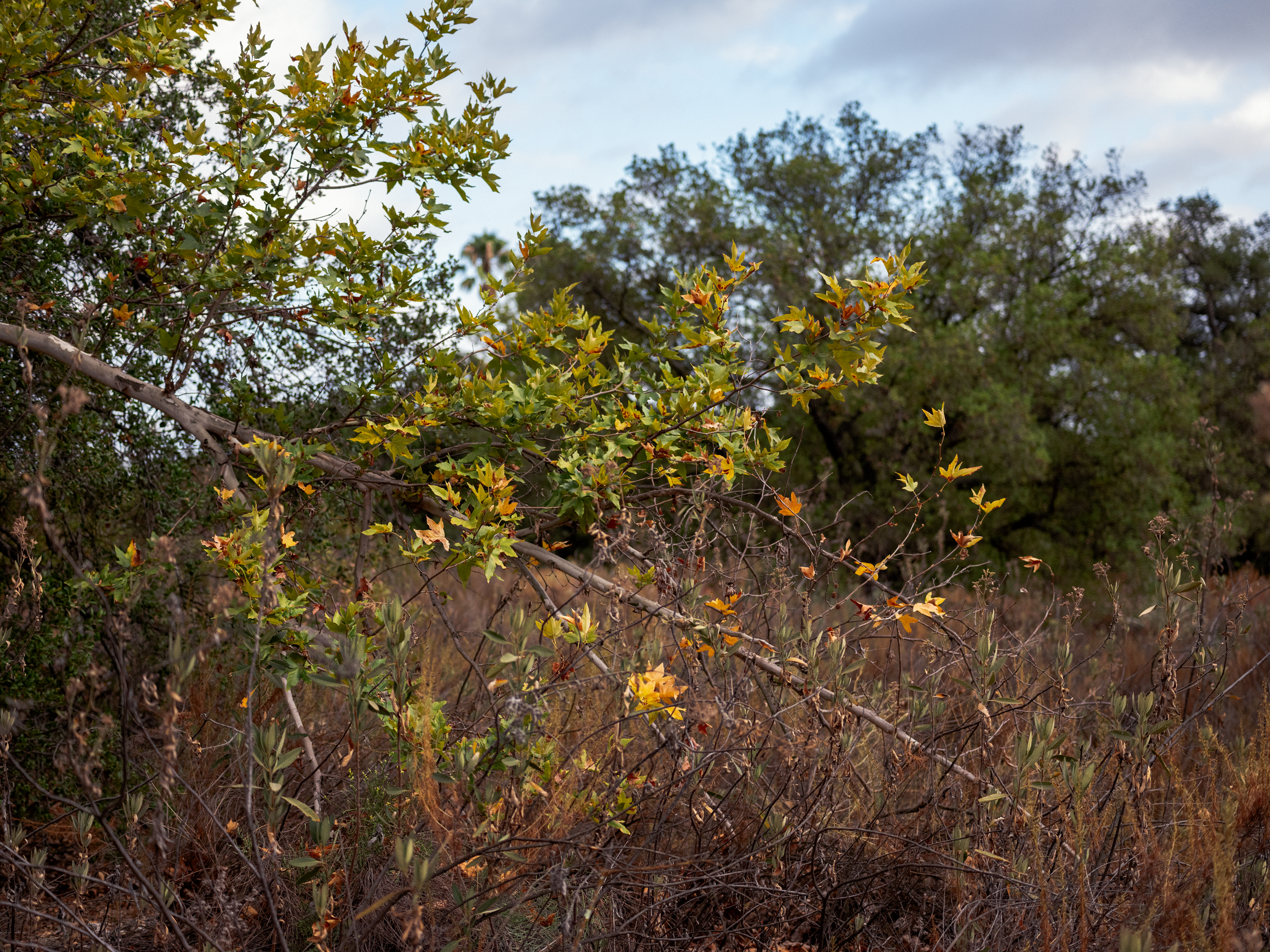
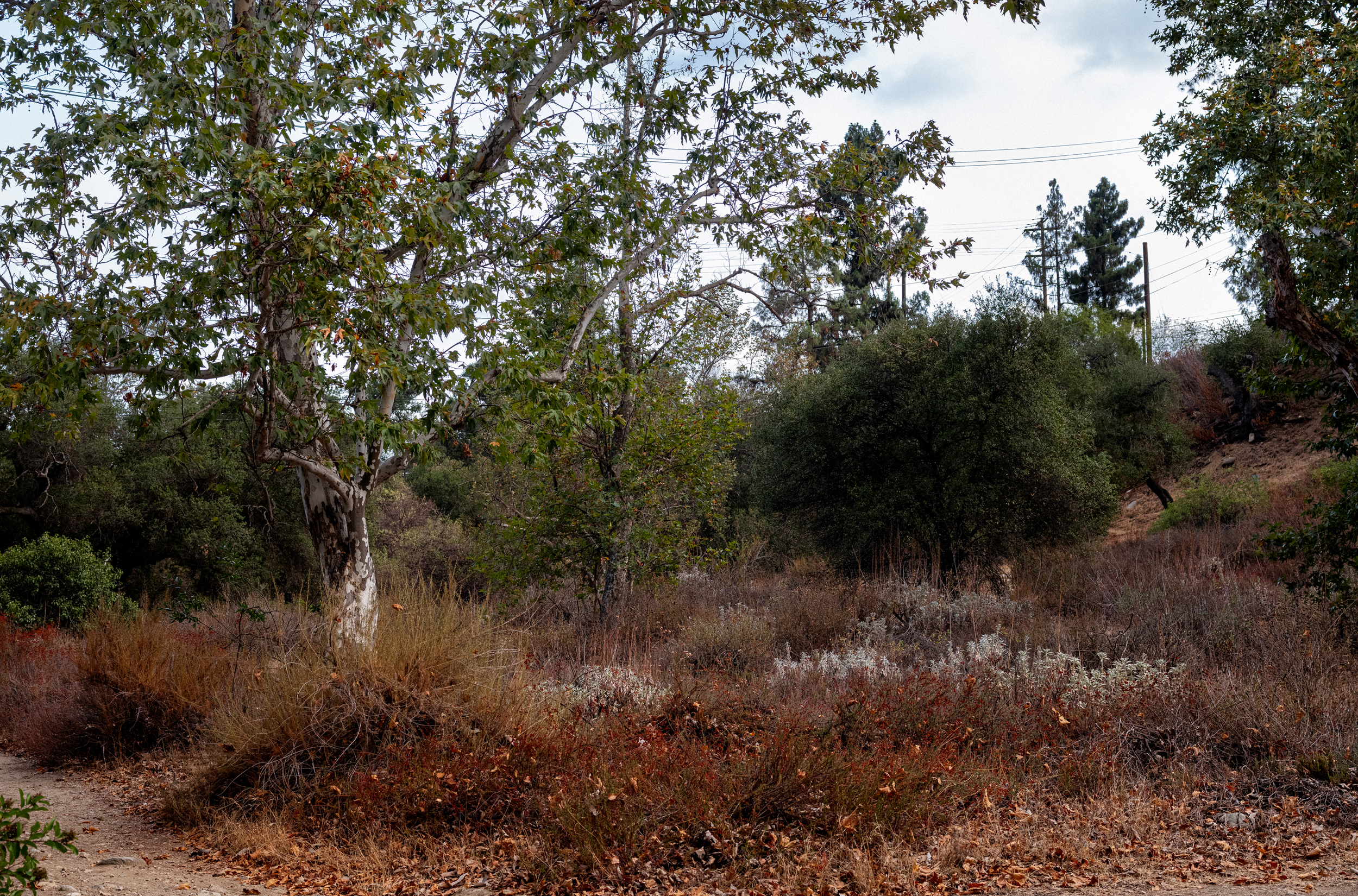
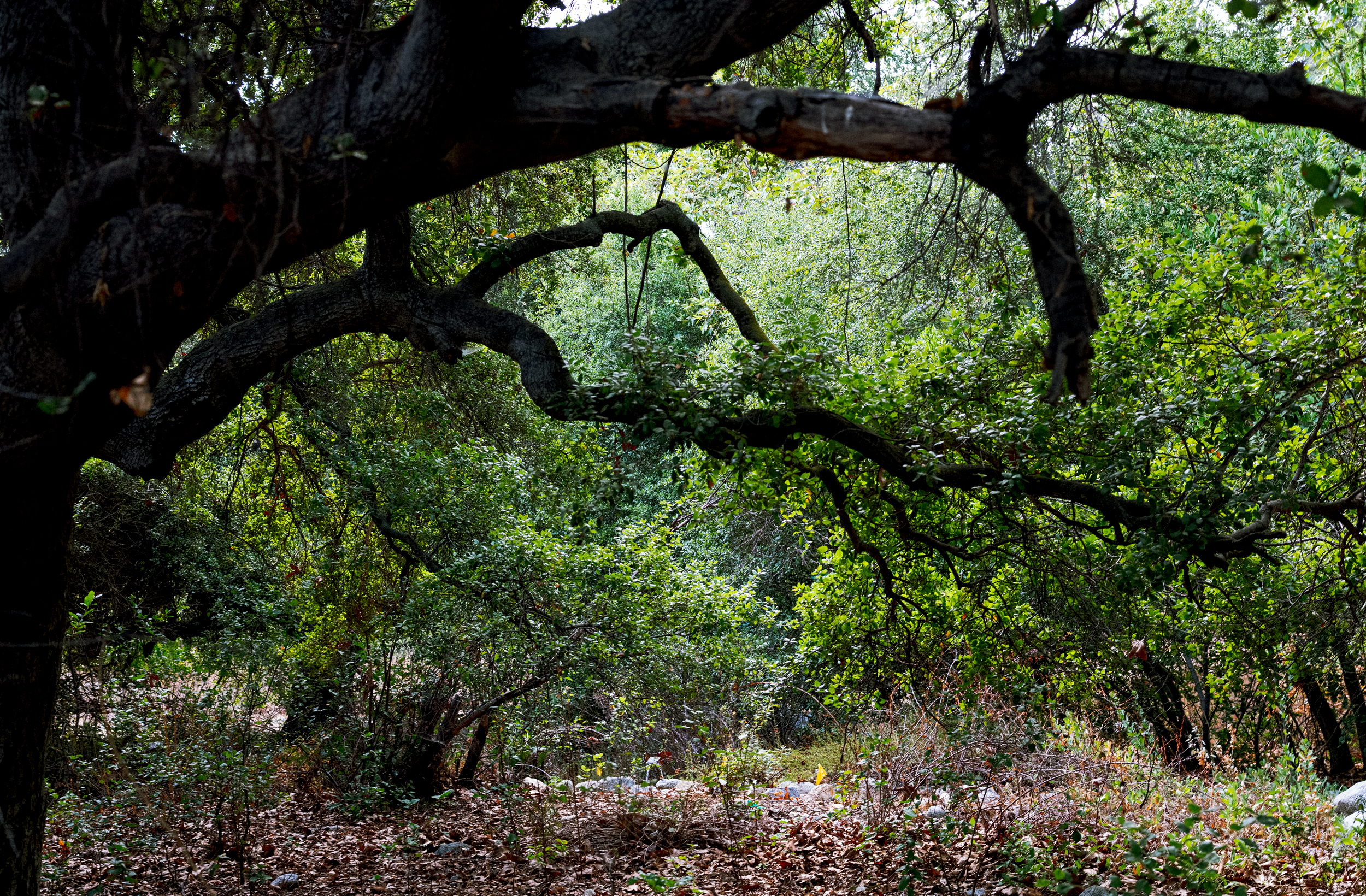
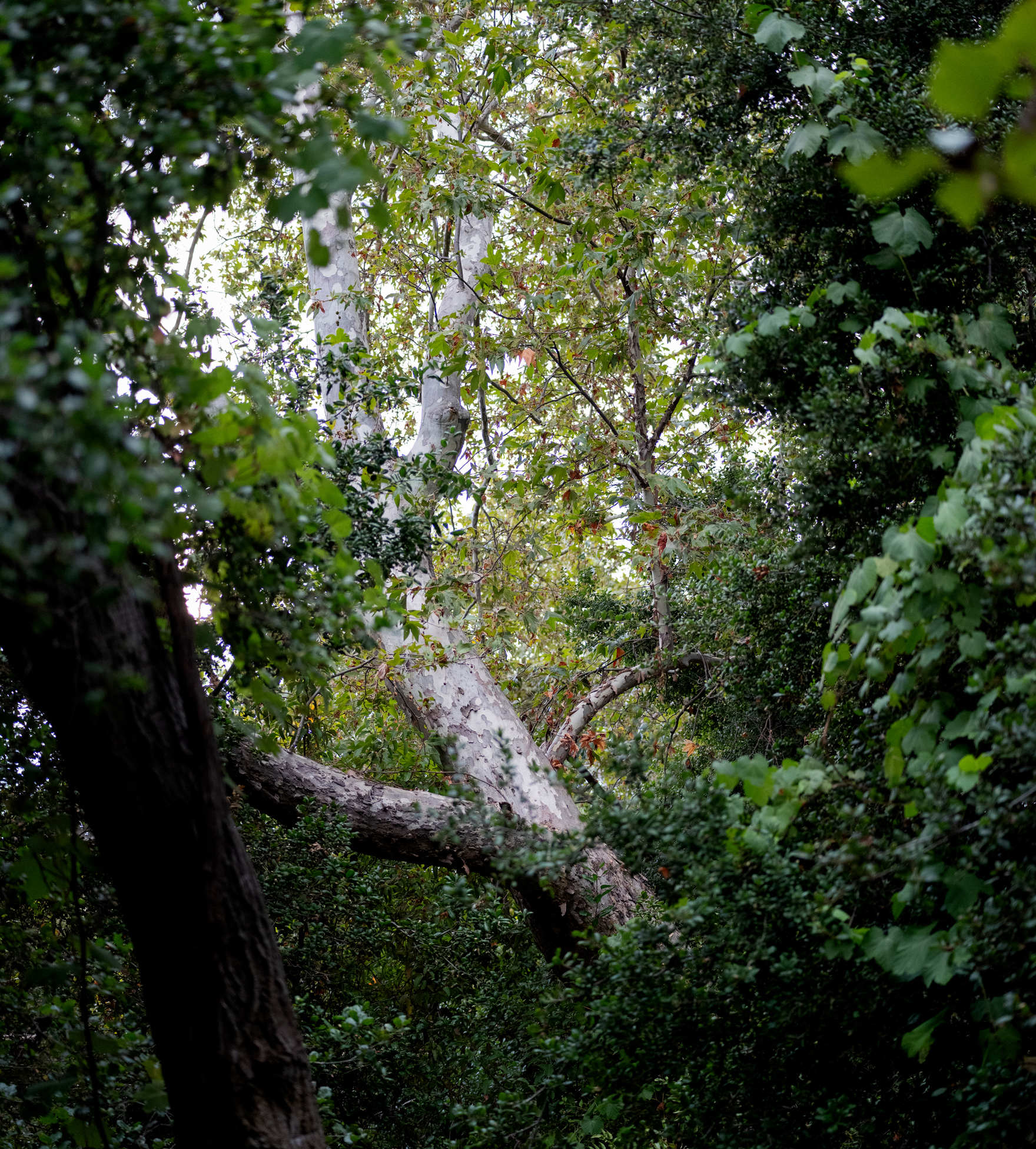

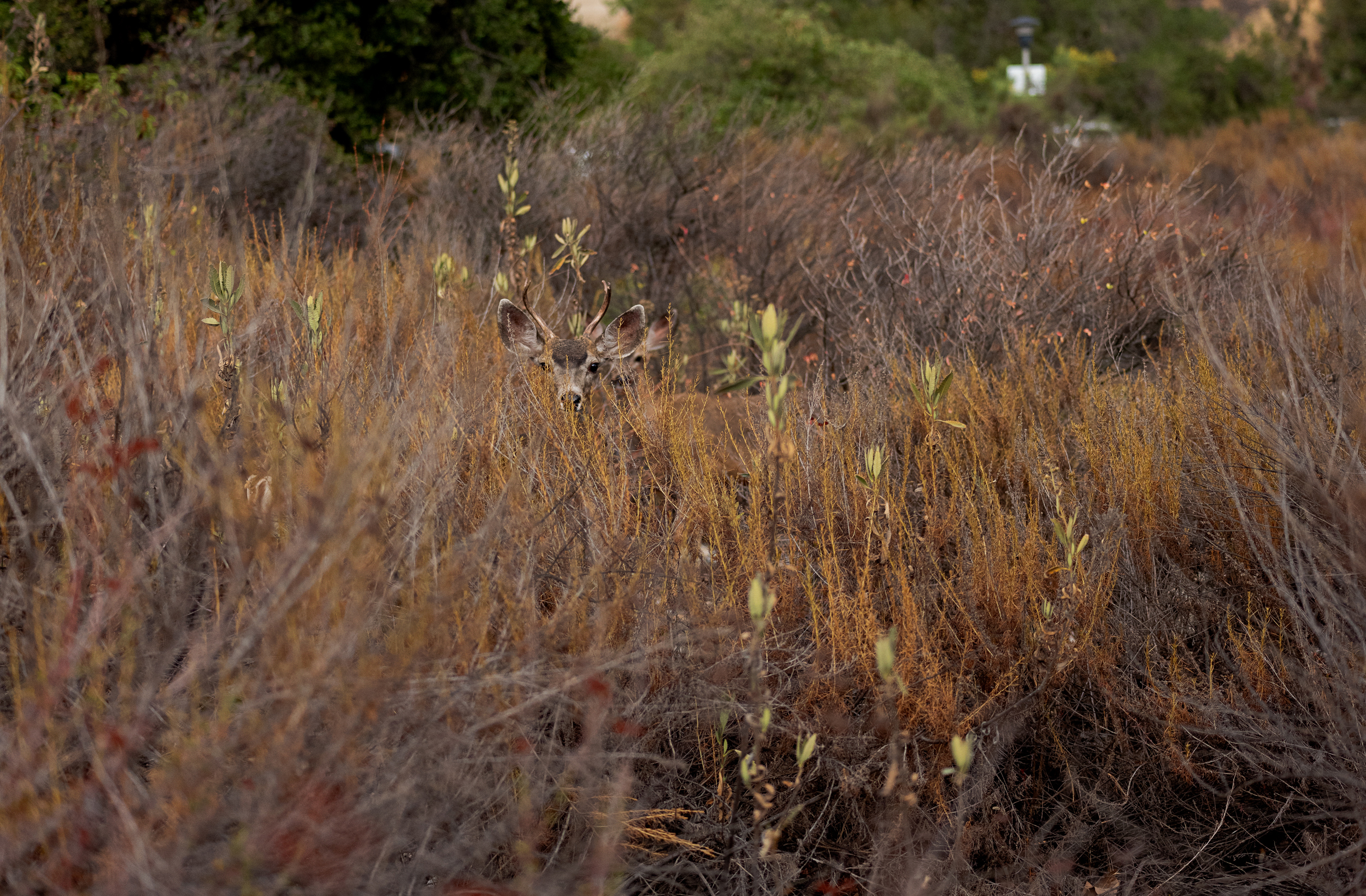


Eaton Canyon Natural Area and Nature Center
1750 N. Altadena Dr
Pasadena, CA 91001


Established:
1998
Size:
198 acres
Features:
Nature Center
Hiking trails
Public Programing
Equestrian Facilities
Picnic Areas
Self Guided Nature Trails
Best time to visit:
Eaton Canyon always has something blooming. In spring look for the buckeye, the coast sunflowers and the wildflowers. In summer the buckwheats. Fall brings in the deep rust of buckwheats and the beautiful fall color of the cotton woods. The mature oak trees that surround the Nature Center make this a pleasant place to visit, even in the height of summer.
The Eaton Canyon Nature Center and Natural Area sit at the base of the San Gabriel Mountains. It is one of the spaces in the LA Area that remind us how dramatic our urban to wild interface can be. Eaton Canyon is less than a ten minute drive from Eaton Canyon is less than a ten minute drive from Downtown Pasadena and yet it feels like a completely different world. The San Gabriels rise dramatically, in the wet season the wash runs with water and the bushes and trees are filled with wildlife.
The Natural Area covers 198 acres and includes the Nature Center, the original site of the Mount Wilson Toll road and a series of water falls. Only the lower water fall, the Eaton Canyon Falls which can be accessed by a lovely trail that runs along the Eaton Wash, is open to the public. The upper falls, the cause of serval deaths, are considered too dangerous and are closed to the public. The Nature Center has three self guided Nature Trails, the Fire Ecology Trail, the Junior Ecology Trail and the Oak Terrace Trail.
The space around the Nature Center features several smaller walking trails, an amphitheater and a stunning
The Natural Area covers 198 acres and includes the Nature Center, the original site of the Mount Wilson Toll road and a series of water falls. Only the lower water fall, the Eaton Canyon Falls which can be accessed by a lovely trail that runs along the Eaton Wash, is open to the public. The upper falls, the cause of serval deaths, are considered too dangerous and are closed to the public. The Nature Center has three self guided Nature Trails, the Fire Ecology Trail, the Junior Ecology Trail and the Oak Terrace Trail.
The space around the Nature Center features several smaller walking trails, an amphitheater and a stunning
example of oak woodland and riparian habitats. The area directly surrounding the Nature Center features plants many native plants commonly used in landscaping, but here we see them in their wild state. The beauty is not just of the plants themselves, but here the plant community as a whole truly shines. There is nothing static, the beauty of the space changes with the seasons, as some plants move into dormancy others come through with beautiful summer flowers. It reminds us not only that Southern California has seasons, but that they all have something to offer.
“The beauty is not just of the plants themselves, but here the plant community as a whole truly shines.”
On the Eaton Canyon Nature Center Associates site there is a list of plants that can be found, with images, descriptions and a link to the plant’s Calscape page. They include not only the common landscaping plants but also the less popular plants that generally don’t make it into guide books, such as Horseweed (Conyza canadensis) or Telegraph Weed (Heterotheca grandiflora) as well as the invasive plants that are to be found at the site. It is a super handy and helpful way to learn about and identify plants in the field and to better understand our ecosystem.

Once an important resource for the Tongva, Eaton Canyon was a part of Western expansion. Gold was discovered in late 1800’s, John Muir visited the canyon in August of 1878 and 1940’s it was used to manufacture missiles for WWII. Eaton Canyon is part of the Los Angeles River watershed. Eaton Canyon is part of the Los Angeles River watershed. Eaton Creek connects to the Eaton Wash and then to the Rio Honda, and then to the LA River.
A detailed historical timeline of Eaton Canyon, by filmmaker and artist Kate Lain, can be found on here. Eaton Canyon was an important water source for the Gabrieleño-Tongva, the village of Puntitavjatngna, was possibly the site of the small village of Topisibit. When the San Gabriel Mission was founded in 1771, the Tonga were removed from their land and sent to the mission. It was there that they were given the name Gabrieleño.
The Spanish named the canyon El Percipicio, for its steep gorges. Despite being inhabited and managed from some time by the Gabrieleño-Tongva, the Canyon was renamed later for Judge Benjamin Eaton and it is Eaton who is credited with first harnessing the water source which he used grow grapes. Eaton purchased the Fair Oaks ranch from Eliza Johnston in 1865, who was the widow of Confederate Army General
A detailed historical timeline of Eaton Canyon, by filmmaker and artist Kate Lain, can be found on here. Eaton Canyon was an important water source for the Gabrieleño-Tongva, the village of Puntitavjatngna, was possibly the site of the small village of Topisibit. When the San Gabriel Mission was founded in 1771, the Tonga were removed from their land and sent to the mission. It was there that they were given the name Gabrieleño.
The Spanish named the canyon El Percipicio, for its steep gorges. Despite being inhabited and managed from some time by the Gabrieleño-Tongva, the Canyon was renamed later for Judge Benjamin Eaton and it is Eaton who is credited with first harnessing the water source which he used grow grapes. Eaton purchased the Fair Oaks ranch from Eliza Johnston in 1865, who was the widow of Confederate Army General
Albert Sidney Johnston. Judge Eaton was also involved in the creation of the Mount Wilison Toll road, which starts in the park. It is now closed to cars but it is possible to hike the trail. In the 1930’s the land in the area that was owned by the city of Pasadena was declared a bird and game sanctuary. In 1950 Mary Beatrice Fox sold her 108 acres of the canyon to LA County for the use of a park. 13 years later the first Nature Center was built.
“Despite being inhabited and managed from some time by the Gabrieleño-Tongva, the Canyon was renamed later for Judge Benjamin Eaton”
The Canyon has been subject to many floods and fires through out its existence. In October of 1993 a wildfire burned through 6,000 acres and destroyed 2/3 of the canyon, including the Nature Center. The fire exposed a secret in the hills, The Eaton Canyon Project, and its WWII missiles. The project covered 146 acres in the foothills, and was the rocket making capital of the United States.
The Nature Center was rebuilt in 1998. Included in the grant was an allotment for the Fire Ecology Trail and the Junior Ecology Trail.

More Information

Fire Ecology Trail
The west has a complicated relationship with wild fire. We live under constant and increasing threat of fire. In fact the area that the Fire Ecology Trail covers was part of the 6,000 acres that burned in a brush fire in 1993. Climate change creates hotter summers and dryer winters, wildfire in the west gets more and more dangerous. It is hard to remember, therefore, that wildfire is a natural part of our ecology. Many of our plants have evolved to to either survive the fire or to use the fire as a means of propagation. The Fire Ecology Trail focuses on these adaptations and relationship to fire.

Junior Nature Trail
The Junior Nature Trail was developed in memory of Eaton Canyon volunteer Mary Shannon. It runs in a loop, both starting and ending at the Nature Center. The Trail is designed to invite children to look closer at the environment and to stop, look and listen for birds and other animals. The guide features helpful questions encourage closer examination of plants and features of the Natural Area. The Nature Center was rebuilt in 1998.

Oak Terrace Nature Trail
The Oak Terrace Trail runs for about a quarter of a mile along the North of the Nature Center. It’s information stops focus on the common plants that make up the ecology of the Natural Area. The Trail runs through both woodland and open space, which provides a great deal of diversity in the plants that are featured. The guide gives not only information on the plants, but also how they support the wildlife and their roles in indigenous culture. It is a great starting point for those looking to learn about how our ecosystem works, and how the plants and animals are intertwined.
Address:
1750 N Altadena Dr
Pasadena, CA 91107
Phone & Email:
626-398-5420
ecncag@gmail.com
Gate Hours:
Tuesday-Sunday
8:00am-7:30pm
Closed Mondays
Nature Center Hours:
Tuesday-Sunday
10:30am-7:00pm
Saturdays
9:00am-7:00pm
Closed Mondays
Gift Shop Hours:
Tues., Wed., Fri., Sun.
10:30am-2:30pm
Sat.
10:00am-2:00pm
Closed Mondays













Eaton Canyon
Natural Area and
Nature Center
1750 N. Altadena Dr
Pasadena, CA 91001

Established:
1998
Size:
198 acres
Features:
Nature Center
Hiking trails
Public Programing
Equestrian Facilities
Picnic Areas
Self Guided Nature Trails
Best time to visit:
Eaton Canyon always has something blooming. In spring look for the buckeye, the coast sunflowers and the wildflowers. In summer the buckwheats. Fall brings in the deep rust of the buckwheats and the beautiful fall color of the cotton woods. The mature oak trees that surround the Nature Center make this a pleasant place to visit, even in the height of summer.
The Eaton Canyon Nature Center and Natural Area sit at the base of the San Gabriel Mountains. It is one of the spaces in the LA Area that remind us how dramatic our urban to wild interface can be. Eaton Canyon is less than a ten minute driveEaton Canyon is less than a ten minute drive from Downtown Pasadena and yet it feels like a completely different world. The San Gabriels rise dramatically, in the wet season the wash runs with water and the bushes and trees are filled with wildlife.
The Natural Area covers 198 acres and includes the Nature Center, the original site of the Mount Wilson Toll road and a series of water falls. Only the lower water fall, the Eaton Canyon Falls which can be accessed by a lovely trail that runs along the Eaton Wash, is open to the public. The upper falls, the cause of serval deaths, are considered too dangerous and are closed to the public. The Nature Center has three self guided Nature Trails, the Fire Ecology Trail, the Junior Ecology Trail and the Oak Terrace Trail.
The Natural Area covers 198 acres and includes the Nature Center, the original site of the Mount Wilson Toll road and a series of water falls. Only the lower water fall, the Eaton Canyon Falls which can be accessed by a lovely trail that runs along the Eaton Wash, is open to the public. The upper falls, the cause of serval deaths, are considered too dangerous and are closed to the public. The Nature Center has three self guided Nature Trails, the Fire Ecology Trail, the Junior Ecology Trail and the Oak Terrace Trail.

The space around the Nature Center features several smaller walking trails, an amphitheater and a stunning example of oak woodland and riparian habitats. The area directly surrounding the Nature Center features plants many native plants commonly used in landscaping, but here we see them in their wild state. The beauty not just of the plants themselves, but the plant community as a whole truly shines. There is nothing static, the beauty of the apes changes with the seasons, as some plants move into dormancy others come through with beautiful summer flowers. It reminds us not only that Southern California has seasons, but that they all have something to offer.
“The beauty is not just of the plants themselves, but here the plant community as a whole truly shines.”
On the Eaton Canyon Nature Center Associates site there is a list of plants that can be found, with images, descriptions and a link to the plant’s Calscape page. They include not only the common landscaping plants but also the less popular plants that generally don’t make it into guide books, such as Horseweed (Conyza canadensis) or Telegraph Weed (Heterotheca grandiflora) as well as the invasive plants that are to be found at the site. It is a super handy and helpful way to learn about and identify plants in the field and to better understand our ecosystem.

Once an important resource for the Tongva, Eaton Canyon was a part of Western expansion. Gold was discovered in late 1800’s, John Muir visited the canyon in August of 1878 and 1940’s it was used to manufacture missiles for WWII. Eaton Canyon is part of the Eaton Canyon is part of the Los Angeles River watershed. Eaton Creek connects to the Eaton Wash and then to the Rio Honda, and then to the LA River.
A detailed historical timeline of Eaton Canyon, by filmmaker and artist Kate Lain, can be found on here. Eaton Canyon was an important water source for the Gabrieleño-Tongva, the village of Puntitavjatngna, was possibly the site of the small village of Topisibit. When the San Gabriel Mission was founded in 1771, the Tonga were removed from their land and sent to the mission. It was there that they were given the name Gabrieleño.
The Spanish named the canyon El Percipicio, for its steep gorges. Despite being inhabited and managed from some time by the Gabrieleño-Tongva, the Canyon was renamed later for Judge Benjamin Eaton and it is Eaton who is credited with first harnessing the water source which he used grow grapes. Eaton purchased the Fair Oaks ranch from Eliza Johnston in 1865, who was the widow of Confederate Army General Albert Sidney Johnston.
A detailed historical timeline of Eaton Canyon, by filmmaker and artist Kate Lain, can be found on here. Eaton Canyon was an important water source for the Gabrieleño-Tongva, the village of Puntitavjatngna, was possibly the site of the small village of Topisibit. When the San Gabriel Mission was founded in 1771, the Tonga were removed from their land and sent to the mission. It was there that they were given the name Gabrieleño.
The Spanish named the canyon El Percipicio, for its steep gorges. Despite being inhabited and managed from some time by the Gabrieleño-Tongva, the Canyon was renamed later for Judge Benjamin Eaton and it is Eaton who is credited with first harnessing the water source which he used grow grapes. Eaton purchased the Fair Oaks ranch from Eliza Johnston in 1865, who was the widow of Confederate Army General Albert Sidney Johnston.


Eaton purchased the Fair Oaks ranch from Eliza Johnston in 1865, who was the widow of Confederate Army General Albert Sidney Johnston. Judge Eaton was also involved in the creation of the Mount Wilison Toll road, which starts in the park. It is now closed to cars but it is possible to hike the trail. In the 1930’s the land in the area that was owned by the city of Pasadena was declared a bird and game sanctuary. In 1950 Mary Beatrice Fox sold her 108 acres of the canyon to LA County for the use of a park. 13 years later the first Nature Center was built.
“Despite being inhabited and managed from some time by the Gabrieleño-Tongva, the Canyon was renamed later for Judge Benjamin Eaton”
The Canyon has been subject to many floods and fires through out its existence. In October of 1993 a wildfire burned through 6,000 acres and destroyed 2/3 of the canyon, including the Nature Center. The fire exposed a secret in the hills, The Eaton Canyon Project, and its WWII missiles. The project covered 146 acres in the foothills, and was the rocket making capital of the United States.
The Nature Center was rebuilt in 1998. Included in the grant was an allotment for the Fire Ecology Trail and the Junior Ecology Trail.

More Information

Fire Ecology Trail
The west has a complicated relationship with wild fire. We live under constant and increasing threat of fire. In fact the area that the Fire Ecology Trail covers was part of the 6,000 acres that burned in a brush fire in 1993. Climate change creates hotter summers and dryer winters, wildfire in the west gets more and more dangerous. It is hard to remember, therefore, that wildfire is a natural part of our ecology. Many of our plants have evolved to to either survive the fire or to use the fire as a means of propagation. The Fire Ecology Trail focuses on these adaptations and relationship to fire.

Junior Nature Trail
The Junior Nature Trail was developed in memory of Eaton Canyon volunteer Mary Shannon. It runs in a loop, both starting and ending at the Nature Center. The Trail is designed to invite children to look closer at the environment and to stop, look and listen for birds and other animals. The guide features helpful questions encourage closer examination of plants and features of the Natural Area. The Nature Center was rebuilt in 1998.

Oak Terrace Nature Trail
The Oak Terrace Trail runs for about a quarter of a mile along the North of the Nature Center. It’s information stops focus on the common plants that make up the ecology of the Natural Area. The Trail runs through both woodland and open space, which provides a great deal of diversity in the plants that are featured. The guide gives not only information on the plants, but also how they support the wildlife and their roles in indigenous culture. It is a great starting point for those looking to learn about how our ecosystem works, and how the plants and animals are intertwined.
Address:
1750 N Altadena Dr
Pasadena, CA 91107
Phone & Email:
626-398-5420
ecncag@gmail.com
Gate Hours:
Tuesday-Sunday
8:00am-7:30pm
Closed Mondays
Nature Center Hours:
Tuesday-Sunday
10:30am-7:00pm
Saturdays
9:00am-7:00pm
Closed Mondays
Gift Shop Hours:
Tues., Wed., Fri., Sun.
10:30am-2:30pm
Sat.
10:00am-2:00pm
Closed Mondays










